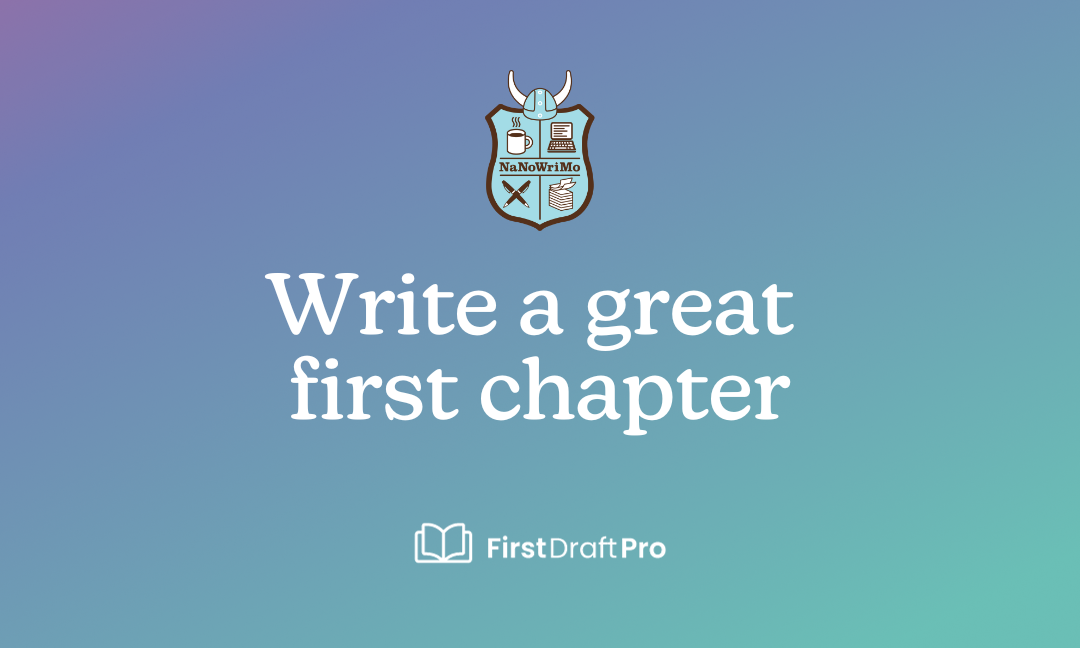Establish your characters

Once you've established your story basics, the next important step in your Nanowrimo preparation is establishing your characters. There are three main requirements for establishing your character basics:
- Establish what they want – i.e: their external goal and internal goal.
- Establish how they will transform over the course of your story – this is their arc/journey.
- Establish their significant relationships in the context of the story.
In order to draw your readers in and keep them reading, you want to create powerful, relatable characters. Remember, relatable characters don’t necessarily need to be likeable! You can challenge your reader as much as you like, as long as your characters have clear desires and motivations. Sometimes the most inscrutable characters are the most compelling – think deranged Patrick Bateman or the aloof Mr Darcy.
Consider the following tips for getting to grips with your main character and supporting cast.
Establishing your protagonist
What do they want?
Set up the conflict between your protagonist’s internal and external goal. Their internal goal is what truly motivates them, while their external goal is their more visible and obvious desire. For maximum tension, make sure that these two goals are at odds with each other. Your character will be forced to choose between these goals later on, so it’s important that you foreshadow this.
Let’s return to the obsessive librarian from our article about establishing your story basics:
An obsessive librarian wants nothing more than to apprehend a library patron who writes marginalia in library books. But, when a secret in the depths of the library archive threatens the very existence of the library itself, the marginalian might just be the only one who can help.
In this example, the librarian’s external goal is what she thinks she wants – to bring the marginalian to justice. However, let’s imagine a more personal, internal goal that lies beneath. Perhaps the library is her last remaining connection to her late parents, and she wishes to continue their legacy as an exacting custodian of their library.
Her internal and external goals are fundamentally incompatible, which foreshadows the ultimate compromise – she will have to choose between her external and internal values in order to achieve her (ultimately more important) goal of saving the library.
How will they transform?
This is your character’s arc, or journey, in the story. This is often an internal transformation, so try to ask questions like: How do they deal with adversity? How do they change? What do they learn? The answers are usually found in the way your character works to resolve the conflict between their goals.
Who’s around them?
Think about your main character’s significant relationships. These people (or animals!) have an integral part to play in the development of your hero’s character arc. Ask questions like: What role does this person play for my protagonist – do they help or hinder them? Does my protagonist love or despise this person? How does this relationship change over the course of the story?
This helps you understand your characters’ inner lives, so that you can create interesting relationships that both satisfy your readers and enhance your plot.
Remember: information only matters if it serves your story. It’s important to know your main character’s significant relationships, but only in the context of the story. You don’t need to know their entire family tree, or their second cousin’s allergies (unless they have an allergic reaction that forces your protagonist to act).
Building out the rest of the cast
Compelling characters are what make your readers care! Although less prominent, your supporting cast adds nuance to your story, and highlights the plight of your main characters. They make for a richer reading experience, so it’s important not to forget them.
Just like your protagonist, your supporting characters also need to develop throughout the story:
- Think about their goals. How do your secondary characters’ internal and external goals overlap with, or even counteract, the goals of your protagonist? Establish good vibes where your characters agree, or highlight tension where they clash.
- Consider their journey. Some minor characters can have their own story arcs to add depth to your story. Give some love to your supporting characters, but don’t drive yourself crazy with it! Remember, minor arcs for minor characters, major arcs for major ones.
- Examine their relationships. Think about how your secondary characters relate to your protagonist. In this case, social conventions can work to establish a character quickly. For example, readers broadly know what relationship dynamics to expect from a parent, sibling, friend, or school teacher. Although of course you can subvert them!
Create great characters
Inhabiting different characters is one of the most enjoyable parts of writing! Have fun with it, and don’t fuss too much about individual appearances and quirks – unless they come naturally as you write. You can always come back to a character in the editing stage to make them more distinctive.








